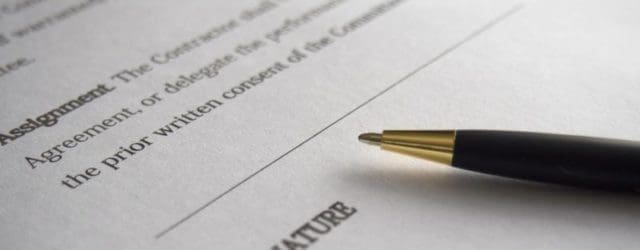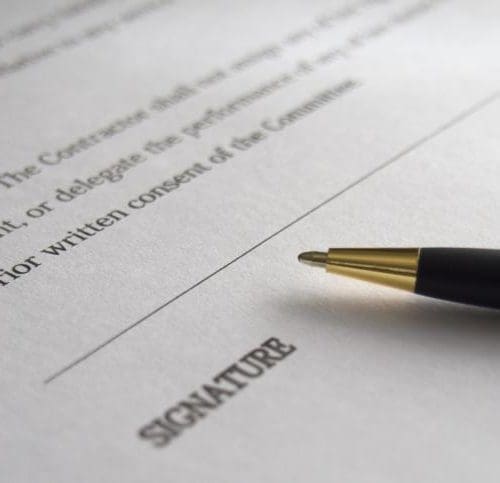Witness Statements: The pen is mightier than the sword, but just watch out for whose pen it is!
December 2021BLUE MANCHESTER LIMITED v (1) BUG-ALU TECHNIC GMBH (2) SIMPSONHAUGH ARCHITECTS LIMITED [2021] EWHC 3095 (TCC)
Background
The case concerns the failure of shadow box units in the cladding of the Beetham Tower, Deansgate, Manchester. Blue Manchester Limited (“BML”) and DFL (the claimant in an associated action), both seek to recover damages from BUG-ALU Technic GMBH (“BUG”) as cladding subcontractor and from Simpsonhaugh Architects Limited (“SHA”) as project architect. Both BML and DFL claim as beneficiaries of collateral warranties provided by BUG and SHA. The main contractor is in liquidation and is not a party to the litigation.
The judgment concerns the application made by the claimant, BML, to strike out paragraphs of the trial witness statements of the second defendant SHA, which BML contends do not comply with Practice Direction 32 (“PD32”) or Practice Direction 57AC (“PD57AC”). The first defendant, BUG, is neutral.
BML contends that if SHA’s offending paragraphs of their 5 witness statements are allowed to stand, then the trial would be prejudiced. If the offending paragraphs are not struck out, then SHA ought to be ordered to serve complaint versions under a debarring order. SHA contends their witness statements are fully compliant and BML’s application should be dismissed.
The Dispute
BML contended that there were 6 overriding objectives which trial witnesses must comply:
- They must be in the witness’ own words and must not be expressed in the third person.
- They cannot include opinion about the meaning of a document, unless the witness’ belief is a relevant issue in the case.
- They cannot include argument.
- They cannot quote at any length from documents or take the Court through the document or set out a narrative.
- They must state which statements are made from the witness’ own knowledge and what matters are of information or belief and state the source.
- They must state, on important disputed matters of fact, how well they recall matters and whether their recollection has been refreshed by reference to documents.
BML contended that SHA’s witness statements betray a significant failure to follow the requirements of PD32 and PD57AC. BML alleged they were not drafted in the witnesses’ own words and that all 5 witness statements were drafted in the same style lending to the idea they had all been drafted by the same professional hand. Thus, the requirements of PD32 and PD57AC had been breached.
SHA referred to the Statement of Best Practice (“SBP”) in contending BML’s overriding objectives. SHA contended that:
- Paragraph 3.13 of the SBP permits the legal representative to take primary responsibility for drafting the witness statement and thus, the requirement for the statement to be expressed in the third person should not be read so literally.
- SBP paragraph 2.3 further entitles a witness to give evidence as to what they thought about something at some point in the past, which may include their understanding of a document.
- Paragraph 4 of the SBP permits a witness to give evidence about ‘what they would or would not have done or thought if the facts, or their understanding of them, had been different.’
- Paragraph 3.4 allows reference to documents ‘where necessary.’
- PD57AC is to make clear that the trial witness has personal knowledge – this may be assumed unless the witness states to the contrary.
- The obligation to state how well the witness recalls matters, whether rightly or wrongly, is satisfied if the witness complies in relation to those matters which they believed to be important.
The Findings
Upon assessing both BML and SHA’s position, the Judge made the following useful clarifications:
If the requirements of PD57AC are conscientiously complied with then the witness statements would not contain identical, or very similar, statements in respect of particular issues. The Judge stated;
‘The fact that a legal representative is permitted to take primary responsibility for drafting a witness statement does not justify departing from the clear requirement that the witness statement should, where practicable be in the witnesses’ own words.’ (PD57AC 3.9-3.13)
SHA’s witness statements were written in the third person and failed to state whether they were from the witness’ own knowledge or from information or belief, therefore making it unclear whether the witnesses recounted their own unaided recollection or whether their recollection had been aided by documents. The Judge stated;
‘If PD32.18 and PD57AC are followed conscientiously, it ought not to be necessary for anyone reading… to have to make an educated guess.’
The Judge further confirmed;
‘Complying with these requirements… does not mean that every section of every witness statement must contain a separate introduction, confirming whether it is made from personal knowledge or based on information or belief… or by being referred to documents.’
BML complained that SHA served a composite list of documents which did not separate the documents to which each individual witness had been referred. It was held that considering paragraph 3.2 of PD57AC requires the trail witness statement itself to identify the documents referred to,
‘it cannot be acceptable… for a list which is not even referred to in the witness statement to simply accompany the witness statement.’
The requirement that the witness is to provide details of documents used to refresh their memory only in relation to disputed matters of fact, does not justify a departure in the entirety. Nor, can the witness rely on their own subjective view of what is important to avoid compliance.
SHA’s witness statements went far beyond the necessary reference to documents. The Judge provided a reminder;
‘This… is a very good illustration of lawyers needing to be prised away from the comfort blanket of feeling the necessity of having a witness confirm a thread of correspondence.’
The Court should be realistic about what it requires. If there was proper compliance by SHA with 3.2 of PD57AC, in the most part, then BML would not have reasonable cause for complaint as to the list of documents, so long as the fundamental principles of PD57AC have been kept in mind. The Court should intervene where there has not been compliance in relation to a point which is objectively important. Further, the witness signing the confirmation of compliance does not automatically give the witness the benefit of the doubt that the statement is complaint with PD32 and PD57AC – ‘a witness cannot mark his own homework.’
It was found that the non-compliances by SHA did not justify striking out the witness statements in their entirety – this ‘very significant’ sanction should be saved for the most serious of cases. In agreement with BML, SHA was ordered, by way of an unless order, to redraft the non-compliant sections of the witness statements.
Comment
This case serves as a reminder of the proper production of complaint witness statements. Whilst navigating PD32 and PD57AC, alongside the SBP can prove conflicting and often down to individual interpretation, the Judge helpfully confirms the Court’s position.
- Even though a legal representative has primary responsibility for drafting the witness statement, this does not justify a departure from the requirement that the statement should be in the witness’ own words.
- Confirming whether the statement is purely the witness’ own recollection or has been aided by information or belief, does not have to be separately introduced in every section, however, stating the source and the documents referred to at the outset will allow compliance with PD32.18 and PD57AC without those reading having to make an educated guess as to whether the statements made are purely of the witness’ own knowledge.
- It may be appropriate in some cases that a composite list of documents to accompany multiple witness statements is produced, so long as the individual witness statements indicate the documents referred to.
- So long as there is proper compliance with PD32 and PD57AC, in the most part, then opposing parties would not have reasonable cause for complaint.
- The very significant sanction of striking out witness statements in their entirety should be saved for the most serious of cases.
- Parties in Business and Property Court cases who indulge in unnecessary trench warfare can expect to be criticised and penalised in costs.








